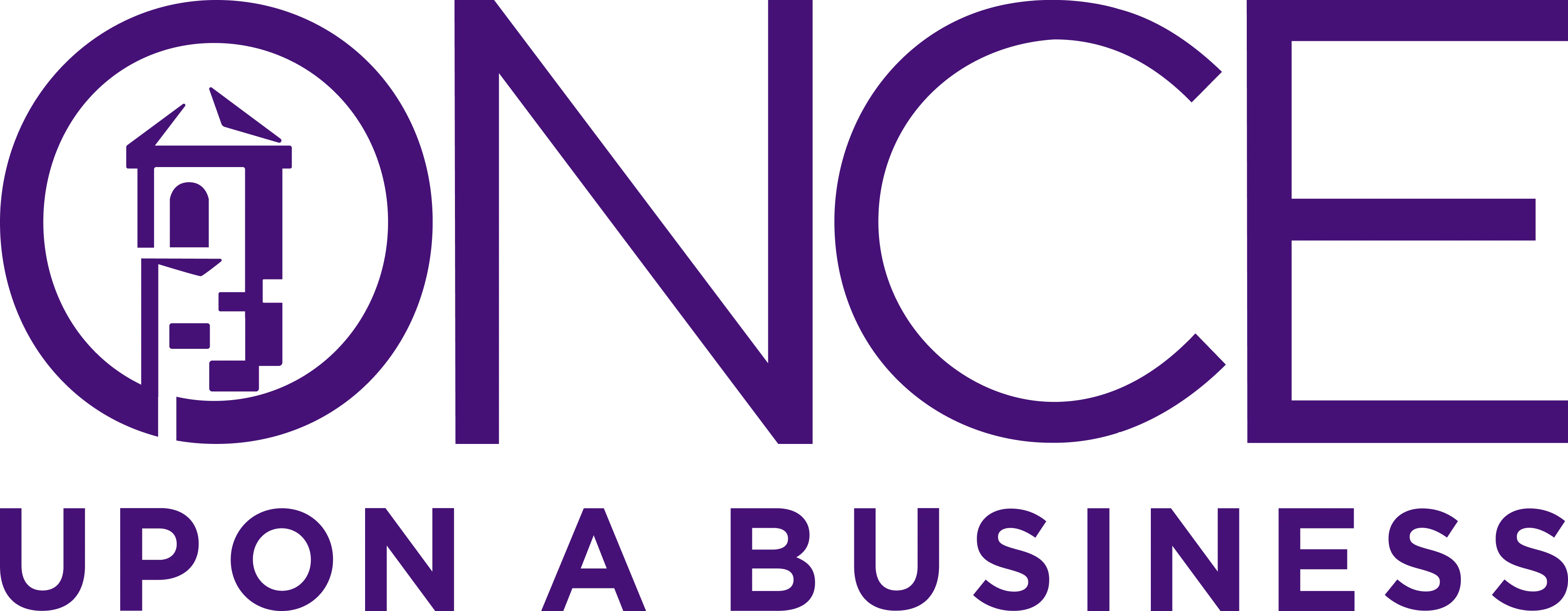
Organizational context is the high-level strategic information you provide to an AI, including your mission, client profiles, and market differentiators. Failing to provide this context is why most AI tools produce generic, unusable content. This guide provides a system to turn your AI into a team member that understands your business as well as you do.
You've felt it, haven't you? The flash of frustration after asking your AI to draft a "strategic" email, only to get back a generic, soulless template that a thousand other businesses could use. It's polite. It's grammatically correct. And it's utterly useless. The problem isn't the AI. The problem is that you've given a world-class engine a map with no destination. You've asked it to "be strategic" without defining what strategy means for your business.
Let's be direct: an AI without context is just a high-speed intern with no onboarding. It will produce plausible-sounding work that actively damages your brand by making you look generic. The solution is to stop treating AI like a magic prompt box and start treating it like a system. The first and most critical layer of that system is Organizational Context: systematically teaching the AI your company's mission, goals, market position, and core strategy.
Skipping this foundational step guarantees you'll waste time on endless revisions and produce content that fails to connect with your audience. Getting it right, however, transforms your AI from a simple tool into a genuine strategic partner—an asset that understands your battlefield and helps you win. For our agency partners, this isn't just a best practice; it's a framework you can deploy to make your clients the heroes of their industries.
Most businesses approach AI training haphazardly, feeding it random pieces of information and hoping for the best. What you need is a systematic approach—a comprehensive business context template that ensures nothing critical gets missed. This template becomes the foundation that transforms generic AI outputs into strategically aligned, brand-consistent communications that actually serve your business objectives.
The Business Idea: Teaching Your AI What You Do
1a. Idea Summary: Your Business in One Sentence
What: Your idea summary is the single most important piece of context you can give an AI. It's not a mission statement or a vision—it's a clear, concise explanation of what your business does, who it serves, and how it creates value.
Why: An AI that understands your core business model can filter every suggestion through the lens of what actually matters to your success. Without this foundational understanding, it will suggest tactics that sound good in theory but contradict your business reality.
How to Document:
Create a single, powerful sentence that captures:
- What you do (the service/product)
- Who you serve (the target market)
- How you create value (the benefit/outcome)
1b. What Problem Does It Solve: The Pain Point Your AI Must Understand
What: This section defines the specific problem your business exists to solve, going beyond surface-level issues to the real emotional, financial, or operational costs your customers experience.
Why: An AI that understands the problem can speak to it authentically in every piece of content it creates. It can identify when a suggestion addresses the real issue versus just creating busywork.
How to Document:
Break this into three components:
- The Surface Problem: What customers initially think they need
- The Real Problem: What they actually need (often deeper/different)
- The Cost of Inaction: What happens if they don't solve this
1c. Business Model: How Your AI Should Think About Revenue
What: Your business model explains how you make money—not just what you charge, but the entire economic engine that drives your business.
Why: An AI that understands your revenue model won't suggest strategies that sound impressive but don't actually drive business results. It can prioritize ideas based on their impact on your specific revenue streams.
How to Document:
Define each element clearly:
- Primary Revenue Streams: What you sell and how it's priced
- Customer Acquisition Cost (CAC): What it costs to get a customer
- Lifetime Value (LTV): What a customer is worth over time
- Key Metrics: The numbers that actually matter for your business
1d. What's The Goal: Your AI's North Star
What: This is your specific, measurable business objective—not a vague aspiration, but a concrete goal that guides every decision.
Why: An AI with a clear goal can evaluate every suggestion against a single question: "Does this move us closer to the objective?" This eliminates the distraction of "good ideas" that don't serve the main purpose.
How to Document:
Be specific about:
- Timeframe: When you want to achieve this
- Metrics: How you'll measure success
- Constraints: What you will/won't do to get there
1e. What Makes This Idea Difficult: The Challenges Your AI Must Navigate
What: These are the specific obstacles, risks, and constraints that make your business challenging to execute—the factors that could derail your success.
Why: An AI that understands your constraints won't suggest strategies that ignore your real-world limitations. It can help you work within your boundaries rather than fantasizing about unlimited resources.
How to Document:
List your biggest challenges in three categories:
- Market Challenges: Competition, timing, customer behavior
- Operational Challenges: Skills, resources, scalability issues
- Strategic Challenges: Positioning, differentiation, execution risks
For Once Upon A Business these were are our challenges:
- Market challenge: Oversaturated agency market.
- Operational challenge: Quality control across multiple disciplines with junior team members.
- Strategic challenge: Remaining invisible while building authority (white-label paradox)
1f. What Strategies/Details Have To Be Fleshed Out: Your AI's Priority Queue
What: These are the critical unknowns and strategic gaps that must be resolved before your business can scale effectively.
Why: An AI that knows what you're still figuring out can focus its suggestions on solving these specific gaps rather than optimizing areas you've already mastered.
How to Document:
Prioritize your unknowns:
- Critical Path Items: What must be solved first
- Research Needs: What data you need to collect
- Decision Points: What choices you need to make
1g. Potential Tech Stack Needs: Your AI's Tool Understanding
What: The technology infrastructure required to deliver your service and scale your operations.
Why: An AI that understands your tech constraints can suggest realistic implementation strategies and identify integration opportunities you might miss.
How to Document:
Map your technology needs:
- Core Tools: What you use to deliver service
- Integration Requirements: How tools must work together
- Scalability Considerations: What happens as you grow
Marketing Language: Teaching Your AI How You Communicate
2a. Brand Name & Logo Ideas: Your AI's Creative Guidelines
What: Your brand identity elements and the principles that guide visual and naming decisions.
Why: An AI that understands your brand aesthetic can maintain consistency across all outputs and suggest ideas that reinforce your positioning.
How to Document:
Define your brand principles:
- Naming Philosophy: What your brand name represents
- Visual Direction: The look and feel you're building toward
- Brand Personality: How you want to be perceived
2b. Business Slogan/Summary Variations: Your AI's Core Message
What: The central insight or belief that drives all your communications—your brand's philosophical foundation.
Why: An AI armed with your core message can ensure every piece of content reinforces your fundamental positioning rather than diluting it with mixed messages.
How to Document:
Establish your messaging hierarchy:
- Slogan: Your core belief in 7 syllables or less
- Short Bio: 1-2 sentences for profiles and introductions
- Long Bio: Full positioning statement for websites and pitches
Here are some of Once Upon A Business's slogan and bios:
- Slogan: Find Your Happily Ever After
- Short Bio: Most marketing strategy is a fairytale. We're the operational partner for agencies and SMBs who are ready to get real. We build the marketing, sales, and project management systems that turn your growth story into reality.
- Long Bio: Agencies sell a great story—a vision of explosive growth and market domination. But for their small and mid-size clients, it's often just that: a story. SMBs are handed a strategic map but no engine, forced to execute with fragmented tools, broken processes, and manual work that kills momentum. The result? The agency’s strategy collects dust, the client misses growth opportunities, and the "happily ever after" never arrives.
2c. Unique Value Proposition: Your AI's Differentiation Filter
What: The specific value you provide that no one else can deliver—your defensible competitive advantage.
Why: An AI that understands your UVP can emphasize your differentiators in every communication and avoid positioning you as a commodity.
How to Document:
Clarify your differentiation:
- Short UVP: One sentence that captures your unique value
- Long UVP: 2-3 sentences with context and proof points
- Proof Points: Evidence that supports your claims
Here are some of Once Upon A Business's short and long UVP:
- We help small to medium sized businesses find the work, get the work, and do the work
- We help small to medium sized business find the work (digital marketing), get the work (crm implementation), and do the work (process developement, automations, and ai agents). Once you have the leads, the now go through your sales systems and actually get conversions, now that you have more clients, your team doesn't have the capacity for more so we work with you to optimize and automate your processes to free up more space for leads > sales > clients
2d. One Liners: Your AI's Conversation Starters
What: Sharp, memorable statements that can be deployed across different contexts—cold outreach, social media, presentations, and sales calls.
Why: An AI with a library of proven one-liners can craft more engaging communications and help you sound consistent across all touchpoints.
How to Document:
Create situation-specific messaging:
- Cold Outreach Openers: Lines that grab attention immediately
- Social Media Hooks: Statements that drive engagement
- Sales Call Moments: Phrases that reframe conversations
- Objection Handlers: Responses to common pushback
Here are some of Once Upon A Business's one liners:
- If not for friends and family, then why do we work as hard as we do? Schedule a call to find your happily ever after
- We used to live in a world where anyone can have an idea, but few execute. Now we live in a world where everyone can execute, but few can scale.
- Strategy without systems is a fairy tale.
- Growth isn't about ideas, its about systems
2e. Presentation/Elevator Pitch: Your AI's Storytelling Framework
What: A compelling 60-second narrative that positions your business around a core insight rather than just describing what you do.
Why: An AI that understands your storytelling structure can create presentations, proposals, and pitches that follow your proven narrative framework.
How to Document:
Structure your story:
- Hook: The surprising insight that grabs attention
- Problem: The issue your audience faces
- Solution: How you solve it differently
- Proof: Evidence it works
- Call to Action: What you want them to do next
For one of our clients, Careers In Web3, it looked like this:
im not here to talk about recruiting, im here to talk about what investors value and how to retain your team. Everyone here knows that your team is more important than the idea. The idea means nothing if the team cannot deliever. The concept is simple. Just have a good team. Right? No, everyone here knows that each team member has to be aligned with your vision, managed, motivated, validated, valued, paid, and so on. Getting a good team is only the beginning, now you have to keep them accountable for all those things. Thats what im here to talk about, if you have positions to fill or positions you want to KEEP filled, talk to me.
Market Research: Teaching Your AI Who You Serve
3a. Target Audience(s): Your AI's Customer Intelligence
What: Detailed profiles of your ideal customers that go beyond demographics to understand psychology, behavior, and business context.
Why: An AI that truly understands your audience can craft messaging that resonates with their specific pain points, fears, and aspirations rather than speaking in generalities.
How to Document:
Create comprehensive persona profiles:
- Persona Name: A memorable name for each audience segment
- What We Want From Them: The specific action or relationship we seek
- Job Title & Company Size: Their professional context
- Business Pain Points: The problems they face at work
- What Keeps Them Awake: Their deeper fears and concerns
- Personality Traits: How they make decisions and communicate
3b. Market Size: Your AI's Opportunity Framework
What: The quantified market opportunity that validates your business potential and guides resource allocation decisions.
Why: An AI that understands market size can help you prioritize opportunities, set realistic goals, and avoid over-investing in small segments.
How to Document:
Establish market metrics:
- Total Addressable Market (TAM): The entire universe of potential customers
- Serviceable Available Market (SAM): The portion you can realistically reach
- Serviceable Obtainable Market (SOM): What you can realistically capture
- Growth Rate: How fast the market is expanding
3c. Emerging Market Trends: Your AI's Future Intelligence
What: The technological, behavioral, and industry shifts that will impact your business model and create new opportunities or threats.
Why: An AI aware of market trends can help you position for future opportunities and avoid suggesting strategies that ignore market direction.
How to Document:
Track relevant trends:
- Trend Name/Description: What's changing and why it matters
- Source/Origin: Where you're seeing this information
- Impact Level: How much it affects your business
- Strategic Implications: What you should do about it
3d. Competitors: Your AI's Differentiation Intelligence
What: The other players in your space and how your positioning differs from theirs—not just direct competitors, but anyone solving similar problems.
Why: An AI that understands the competitive landscape can help you emphasize differentiators and avoid positioning that makes you sound like everyone else.
How to Document:
Map the competition:
- Company Name: Who they are
- Niche/Angle: How they position themselves
- Pricing Strategy: How they charge and what it signals
- How They Differ From Us: What makes you distinct
From Fairy Tale To Happily Ever After
Teaching your AI organizational context isn't about dumping information into custom instructions—it's about creating a systematic knowledge base that transforms every AI interaction from generic to strategically aligned. Each section of this framework serves as a filter that helps your AI understand not just what to say, but how to think about your business.
When you implement this comprehensive approach, you're not just training an AI, you're building a strategic asset that can maintain brand consistency, prioritize opportunities, and generate ideas that actually serve your business objectives. For agency partners, this becomes a deliverable framework they can use to position themselves as the strategic leaders their clients need.
This is why strategy without systems is a fairy tale. Even the most sophisticated AI is just another tool without the systematic context that makes it genuinely useful for your specific business reality.
In Part 2 of this series, we'll build on this organizational foundation and explore The Personnel Context, how to teach your AI about your team's roles, responsibilities, and expertise to enable sophisticated delegation and workflow optimization.
FAQ
1. How is this different from just putting our website's 'About Us' page into the AI?
Your 'About Us' page is marketing copy designed for public consumption. Organizational Context is a structured, internal directive designed for precise execution. It contains sensitive details about your strategy, goals, and pricing that you would not publish on your website. One is a billboard; the other is the architectural blueprint.
2. Should I create a different Organizational Context for each of my agency's clients?
Yes, and this is the key to providing truly valuable white-label services. Your agency has its own master Organizational Context. But when you deploy the AI to work on behalf of a client, you must create and use a separate context document populated with their mission, goals, and strategy. This prevents "context bleed" and ensures the work is perfectly tailored to their brand, not yours.
3. How often should I update this information?
Treat it as a living document. It should be reviewed and updated at least once per quarter, or anytime a significant strategic shift occurs—a new service launch, a change in target market, or a major move by a competitor. An outdated context is as useless as no context at all.
Give Your AI The Organizational Context It Needs
Your business plan is your story's first draft. Use these 16 strategic prompts to find the plot holes, define your core narrative, and give your AI the context it needs to become a true strategic partner—not just an assistant.

Discover Your Happily Ever After
Subscribe to get weekly updates on how you can start handling departmental plot holes in your story!







